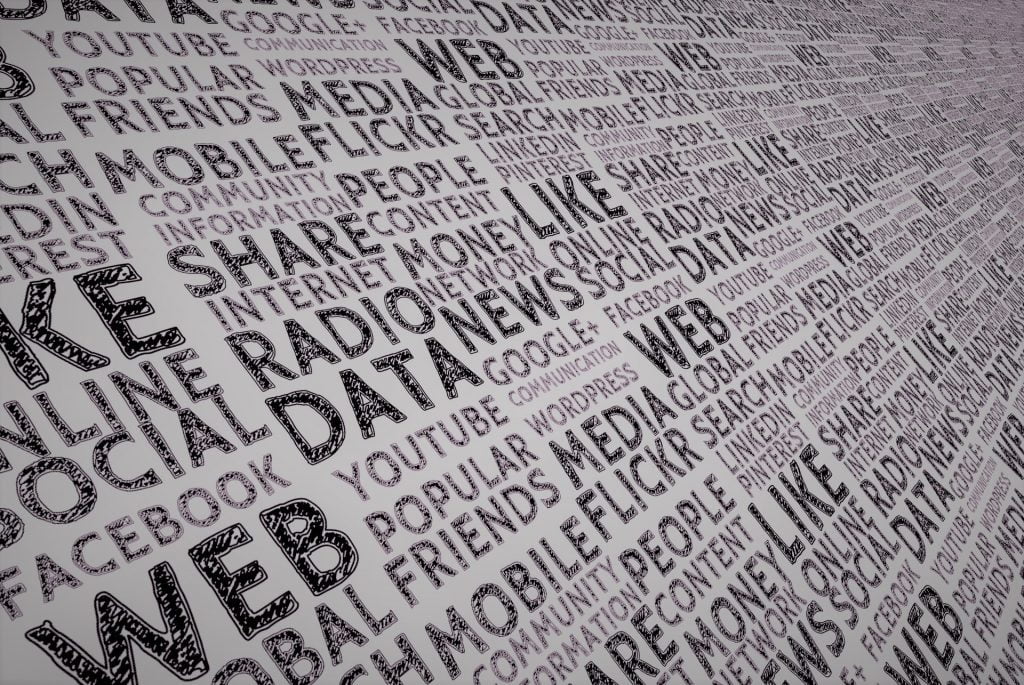Marketing isn’t just about flashy ads and catchy slogans—it’s a science. And like any science, it thrives on data. But how do businesses collect, analyze, and use this data effectively? That’s where a Marketing Information System (MkIS) comes in.
If you’ve ever wondered how companies seem to know exactly what you want before you do, this system is their secret weapon. In this guide, we’ll break down everything you need to know about MkIS in simple, relatable terms.
What is meant by marketing information system?
A Marketing Information System (MkIS) is like a giant digital brain that helps businesses gather, process, and interpret marketing data. Think of it as a well-organized library where instead of books, you have customer insights, market trends, and competitor strategies neatly stored and ready for use.
Unlike random guesswork, an MkIS ensures decisions are based on real, actionable data—helping companies stay ahead of the competition.
Main focus of a marketing information system
So, what’s the big deal with MkIS? Its primary goal is to:
- Collect relevant data (customer preferences, sales trends, competitor moves).
- Analyze and organize this data into useful insights.
- Help businesses make smarter decisions—whether launching a new product or tweaking a pricing strategy.
In short, it turns raw numbers into marketing gold.
Importance of marketing information system
In today’s fast-moving business world, making decisions based on guesswork is like driving blindfolded—you might get lucky, but chances are, you’ll crash. That’s where a Marketing Information System (MkIS) comes in. It’s the GPS that guides businesses toward smarter, data-backed decisions.
Here’s why it’s absolutely essential:
1. Reduces Guesswork
Nobody likes unpleasant surprises—especially in business. Instead of relying on hunches, an MkIS provides real, concrete data to shape strategies. Want to know if a new product will sell? Check historical sales trends. Curious about customer preferences? Analyze survey responses. With an MkIS, businesses move from “I think” to “I know.”
2. Improves Customer Understanding
Customers don’t always say what they mean—but their behavior does. An MkIS tracks purchase history, browsing patterns, and feedback, helping businesses decode what buyers truly desire. This means better-targeted ads, personalized offers, and happier customers.
3. Boosts Efficiency
Manually collecting data is slow and error-prone. An MkIS automates the process, pulling information from multiple sources (sales reports, social media, CRM systems) and organizing it in one place. No more digging through spreadsheets—just instant, actionable insights.
4. Enhances Competitiveness
The market never sleeps. Competitors launch new products, trends shift overnight, and customer tastes evolve. An MkIS acts like a radar, detecting changes early so businesses can adapt quickly. Miss a trend? Your competitor won’t.
5. Supports Better Decision-Making
Every business move involves risk. But with an MkIS, companies can test ideas, predict outcomes, and measure success before fully committing. This means fewer costly mistakes and more winning strategies.
Process of Marketing information system
An MkIS doesn’t just magically spit out answers. It follows a structured process:
- Data Collection – Gathering info from surveys, sales reports, social media, etc.
- Data Analysis – Crunching numbers to find patterns and trends.
- Information Storage – Keeping data organized in databases.
- Decision-Making – Using insights to shape marketing strategies.
Imagine it like baking a cake: you gather ingredients (data), mix them (analysis), bake (store), and finally enjoy (make decisions).
Features of Marketing information system
Here are the must-have features that make an MkIS truly effective:
1. User-Friendly Interface (No Tech Degree Required)
A great MkIS shouldn’t require a PhD in data science to use. If marketers and business owners can’t easily navigate it, they won’t use it—no matter how powerful it is. The best systems have:
✔ Intuitive dashboards (drag-and-drop, visual charts)
✔ Simple reporting tools (one-click exports, easy filters)
✔ Clear language (no confusing jargon)
2. Real-Time Data Updates (No Stale Information)
Marketing moves fast. If your data is even a week old, you might as well be using a crystal ball. A strong MkIS provides:
✔ Live sales tracking (see purchases as they happen)
✔ Social media monitoring (catch trends while they’re hot)
✔ Instant competitor alerts (know when rivals drop prices)
3. Seamless Integration (Plays Nice with Other Tools)
An MkIS shouldn’t exist in a bubble. It needs to connect effortlessly with:
✔ CRM systems (like Salesforce or HubSpot)
✔ E-commerce platforms (Shopify, WooCommerce)
✔ Email marketing tools (Mailchimp, Klaviyo)
4. Advanced Security (Locking Down Your Data)
Customer info, sales records, and marketing strategies are gold mines for hackers. A secure MkIS includes:
✔ Role-based access (only approved users see sensitive data)
✔ Encryption (scrambling data so thieves can’t read it)
✔ Regular backups (so a crash doesn’t wipe out your insights)
5. Customizable Reporting (One Size Doesn’t Fit All)
Every business has unique needs. A rigid system forces you to adapt—but a great MkIS lets you:
✔ Build custom dashboards (see only the metrics that matter to you)
✔ Schedule automated reports (get weekly sales summaries in your inbox)
✔ Compare time periods (How does this month stack up to last year?)
6. Predictive Analytics
The best MkIS doesn’t just tell you what has happened—it predicts what will happen using:
✔ AI-driven forecasts (Will demand spike next month?)
✔ Customer behavior modeling (Who’s most likely to churn?)
✔ Trend anticipation (Is this product about to go viral?)
A well-built MkIS isn’t just helpful—it’s a competitive superpower. The right features mean faster decisions, sharper strategies, and (ultimately) bigger profits.
4 components of marketing information system
A Marketing Information System (MkIS) is like a high-performance engine—it needs all its parts working together smoothly.
Let’s break down the four essential components that power every effective MkIS:
1. Internal Records
This is where your company’s own data lives—sales reports, customer orders, inventory levels, and financial records. Think of it as your business’s diary, tracking everything from daily transactions to seasonal trends. For example, a clothing retailer uses internal records to see which sizes sell fastest or which colors flop. Without this historical data, you’re navigating without a map.
2. Marketing Intelligence
While internal records look inward, marketing intelligence looks outward—tracking competitors, industry shifts, and customer sentiment. Tools like social media monitoring, competitor price tracking, and market reports feed into this component. Imagine spotting a rival’s failed product launch and pivoting your strategy before they recover. That’s the power of real-time intelligence.
3. Marketing Research
Sometimes, you need answers that existing data can’t provide. That’s where surveys, focus groups, and experiments come in. This component tackles specific questions, like “Will our target audience pay more for eco-friendly packaging?” It’s the difference between assuming and knowing what customers truly want.
4. Analytical Tools
Raw data is useless without interpretation. This component includes CRM software, data dashboards, and AI-powered analytics that turn numbers into strategies. For instance, predictive analytics might reveal that customers who buy Product A often return for Product B—helping you bundle them for higher sales.
Three types of marketing information systems
Not all marketing decisions are created equal – some require quick operational data while others need deep strategic analysis. That’s why Marketing Information Systems come in three distinct flavors, each serving a different business need:
1. Operational Systems
These systems keep the marketing engine running day-to-day by tracking:
- Real-time sales transactions
- Inventory levels
- Customer service interactions
- Order fulfillment status
When to use it: When you need to answer immediate questions like “Do we have enough stock to meet today’s orders?” or “Which products sold best this morning?” Retail managers love these systems because they provide instant snapshots of what’s happening right now in stores or online.
2. Analytical Systems
These dig deeper to uncover patterns and insights by analyzing:
- Customer buying behaviors
- Campaign performance metrics
- Market segmentation data
- Long-term sales trends
When to use it: When you need to understand why things are happening (“Why did our summer campaign outperform winter’s?”) or predict future outcomes (“Which customer segment will respond best to our new product?”). Marketing analysts rely on these to craft data-driven strategies.
3. Strategic Systems
These support high-level decision making by providing:
- Market growth projections
- Competitive landscape analyses
- Long-range forecasting
- ROI on major investments
When to use it: When executives need to make billion-dollar decisions like “Should we expand to Asia?” or “Is it time to acquire our competitor?” These systems often incorporate AI and machine learning to simulate different business scenarios.
Choosing the Right System
It’s not about picking one – successful businesses use all three in harmony:
- Operational systems handle today’s fires
- Analytical systems improve tomorrow’s plans
- Strategic systems shape next year’s direction
Marketing Information System Examples
Still fuzzy on how this works in practice? Here are some everyday examples:
- Amazon’s Recommendation Engine – Uses your past purchases to suggest new products.
- Google Analytics – Tracks website traffic to optimize marketing efforts.
- CRM Software (Like Salesforce) – Stores customer interactions for personalized marketing.
Future of the marketing information system
The marketing world is evolving at breakneck speed, and Marketing Information Systems (MkIS) are racing to keep up. Here’s what the next generation of data-driven marketing will look like:
1. AI-Powered Predictive Analytics (Crystal Ball Marketing)
Soon, MkIS won’t just report on past performance—they’ll forecast future trends with scary accuracy. Machine learning algorithms will analyze billions of data points to predict:
✔ Which products will trend before they go viral
✔ When specific customers are most likely to make purchases
✔ Exactly how market conditions will shift next quarter
Imagine your system alerting you: “Stock up on blue widgets—demand will spike 37% in two weeks.” That’s not magic—it’s the future of proactive marketing.
2. Hyper-Personalization at Scale (1:1 Marketing for Millions)
With advances in data processing, MkIS will enable mass customization like never before:
- Dynamic pricing adjusted in real-time for each shopper
- AI-generated product recommendations so precise they feel psychic
- Personalized ad creative automatically tailored to individual preferences
Soon, “generic marketing” will seem as outdated as fax machines.
3. Voice and Visual Search Optimization
As smart speakers and image searches dominate:
✔ MkIS will track voice query patterns (“Alexa, find vegan leather jackets”)
✔ Visual search data will reveal how customers shop via camera scans
✔ Systems will optimize content for conversational, long-tail queries
4. Blockchain-Enhanced Data Security
With growing privacy concerns:
✔ Decentralized ledgers will verify data authenticity
✔ Customers may control personal data via digital wallets
✔ Smart contracts could automate consent management
5. Emotion AI and Sentiment Tracking
Future systems won’t just track what customers buy—they’ll understand how they feel:
✔ Facial recognition gauging reactions to ads
✔ Voice analysis detecting satisfaction levels in calls
✔ Social media mood analysis predicting brand perception shifts
Conclusion
✅ MkIS turns data into powerful marketing strategies.
✅ It has four main components: internal records, intelligence, research, and analytics.
✅ Real-world examples include Amazon’s recommendations and Google Analytics.
✅ The future of MkIS lies in AI, predictive analytics, and hyper-personalization.
Related Posts
Is a Marketing Degree Worth It?
The Role of Information Systems in Knowledge Management




